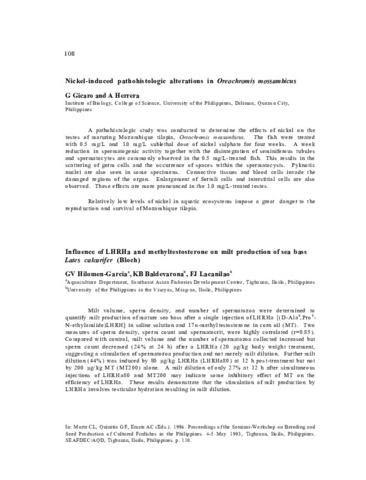Nickel-induced pathohistologic alterations in Oreochromis mossambicus
- Global styles
- MLA
- Vancouver
- Elsevier - Harvard
- APA
- Help
Share
นามธรรม
A pathohistologic study was conducted to determine the effects of nickel on the testes of maturing Mozambique tilapia, Oreochromis mossambicus. The fish were treated with 0.5 mg/L and 1.0 mg/L sublethal dose of nickel sulphate for four weeks. A week reduction in spermatogenic activity together with the disintegration of seminiferous tubules and spermatocytes are commonly observed in the 0.5 mg/L-treated fish. This results in the scattering of germ cells and the occurrence of spaces within the spermatocysts. Pyknotic nuclei are also seen in some specimens. Connective tissues and blood cells invade the damaged regions of the organ. Enlargement of Sertoli cells and interstitial cells are also observed. These effects are more pronounced in the 1.0 mg/L-treated testes.
Relatively low levels of nickel in aquatic ecosystems impose a great danger to the reproduction and survival of Mozambique tilapia.
Description
Abstract only.
การอ้างอิง
Gicaro, G., & Herrera, A. (1996). Nickel-induced pathohistologic alterations in Oreochromis mossambicus. In C. L. Marte, G. F. Quinitio, & A. C. Emata (Eds.), Proceedings of the Seminar-Workshop on Breeding and Seed Production of Cultured Finfishes in the Philippines, Tigbauan, Iloilo, Philippines, 4-5 May 1993 (p. 108). Tigbauan, Iloilo, Philippines: Aquaculture Department, Southeast Asian Fisheries Development Center.
Type
Conference paperISBN
9718511326



